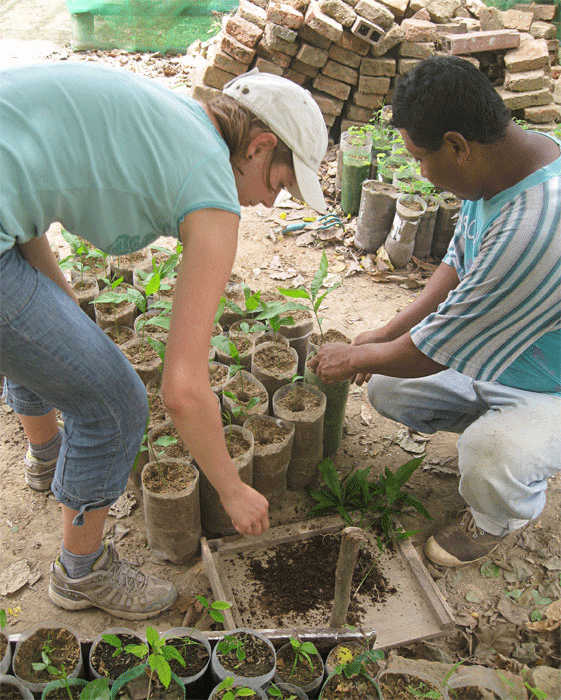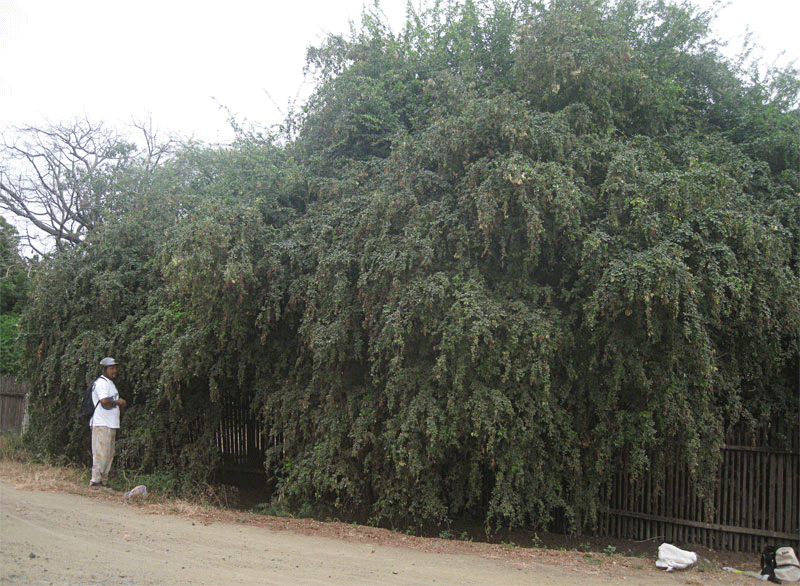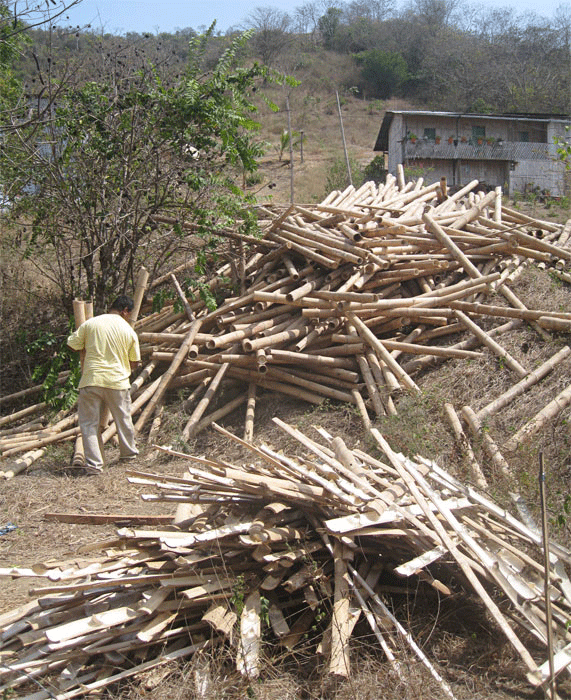August 25-September 20, 2010
Work on the new site behind the greenhouse continues. It is a rather large site with many trails to clear with machetes. The trails weave through existing foliage and around the contours of the land, making as much of the terrain as possible accessible for planting.

At the greenhouse, the seedbeds of Ceibo and Jaboncillo have germinated and the seedlings were transplanted to three-liter bottles. Unfortunately we don’t have as many Ceibo trees as would be ideal, but at least we have some (approximately 50-100). Routine maintenance of the greenhouse involves watering thousands of trees, weeding, and tending to the compost. At least two days a week are dedicated to greenhouse work to make sure that the plants don’t dry out too much.
More seeds have been collected. One morning we stopped by an over-sized Tierrademonte tree (shrub) and collected some seeds. Another day, we knocked down Bototillo seed pods from trees in the Maria Dolores neighborhood. That same morning we also collected more Algarrobo seed pods (near the Casa Ceibo hotel) whose seeds were soaked in water over the weekend and planted in a seedbed on Monday.

On another occasion, our friend Afranio drove Orlando and me to San Clemente to look for Ceibo seeds. The Ceibos around Bahia appear to have been very unproductive this year in terms of seeds. Based on my observations, it appears as though Ceibo trees don’t produce seed pods in consecutive years. And unfortunately, upon arrival to San Clemente, we were only able to locate a couple of Ceibos (of dozens) and they had sparse production of seedpods. And the few seedpods that we came across were still too unripe to be collected. We will have to return within a few weeks, otherwise we will be left without any Ceibo seeds in reserve.
Other work in the field has involved cutting bamboo tubes to make markers for the trees. Approximately one day a week is spent on this so that we slowly accumulate markers for the upcoming rainy season.

Additionally, we have started selectively watering some of the sites that appear to most need a bit of water. Overall the sites are doing very well. Many of the trees have lost their leaves, but this is normal. There are lots of Dry Tropical Forest species which lose their leaves during the dry season to conserve water. Nonetheless, some of the trees could use a drink of water now and again. Ideally, if planted early enough in the rainy season, the saplings should be able to survive the dry season without any additional watering. This is rarely the case since it takes time to plant the different sites and not all of the sites can be planted immediately at the beginning of the rainy season. Consequently, we are required to dedicate a bit of time to watering the trees planted this past year.

Last Wednesday, a class of students from the Interamericano school, taught by Nadine (one of Planet Drum’s three Bioregionalismo teachers) came to visit the greenhouse. I gave them a tour of the trees and the kids even climbed to the top of the hill behind the greenhouse to see the revegetation site that we are currently working on.

Looking into the short-term future, new sites need to be acquired within a few weeks so that they can be and prepared for the trees that we are producing at the greenhouse. Unfortunately, the volunteer situation has been a bit slow as of late, but our spirits remain high and we continue to press onward.
Pásalo bien,
Clay

Reader Interactions